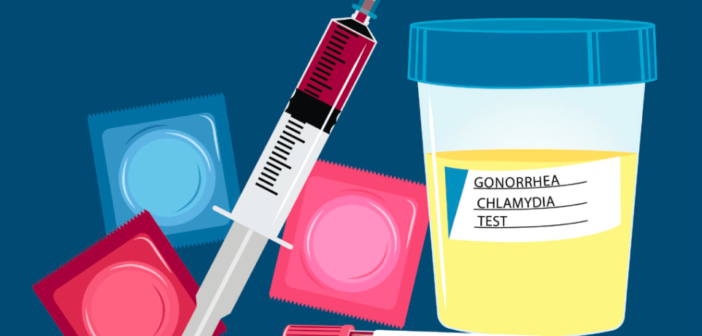It only takes one time.
Not to get pregnant, but to spread a sexually transmitted disease. Americans might be having less sex, but they are being riskier with their actions. This has led to an increase in STDs in young adults.
The average age for those having unsafe sex is between 15 and 24 years old.
“Each year, there are an estimated 20 million new STD infections in the United States,” according to the Center for Disease Control. “Anyone who is sexually active can get an STD.”
Regardless of the type of sex and gender of each partner, the risks are still there.
It might seem as though an increase in STDs would be associated with more sex, but that’s not the case. So why are Americans having less sex? And why aren’t they being safer even with the advancements in contraceptives?
“American adults had sex about nine fewer times per year in the early 2010s compared to the late 1990s,” said Jean Twenge in the study “Declines in Sexual Frequency among American Adults, 1989–2014.”
This 2017 study found two main reasons why the frequency of sex decreased for Americans in their 20s. One reason is that not as many are married or have a steady partner. The other reason is that those who are married aren’t as sexually active.
People who are single have access to more frequent and casual sex. Dating apps such as Tinder and Grindr suggest that sex can be just a few clicks away. Two people can see each other’s profiles online, feel an attraction toward their photos and have a one-night stand without ever meeting face-to-face beforehand.
The discussion of how technology is affecting relationships continues in “America is in a ‘sex drought’ and here’s why it matters,” by Meghan Holohan. In this article, Holohan often referred to Christine Whelan, director of Money, Relationships and Equality Initiative in the School of Human Ecology at the University of Wisconsin-Madison.
“If we are less and less able to engage in physical intimacy, then we are moving away from something that is an evolved tendency that actually signals success,” said Whelan. Generally, “Sex is associated with healthy relationships and overall wellbeing.”
With the rise in popularity of social media, younger generations are starting to look to influencers for advice and taking note of how they live their lives. Generation Z “accounts for more than half of new STD diagnosis last year,” said Claire Hartman, ‘20, former media relations intern at Blue Cross Blue Shield.
Not many online celebrities will talk about the importance of safe sex or how to prevent STDs. Maybe they don’t talk about it because either they have not experienced having an STD or because they have and are embarrassed to admit it to their audience. It could be beneficial for these influencers to be explaining this topic to their viewers but then again, they probably aren’t all experts.
Since these are the people most young adults are listening to, the messages that are put out there are crucial because it could affect their decisions.
The bad news? Just because the sex might be safe, doesn’t mean that the chance of getting an STD is off the table. Condoms can lessen the risk of getting a disease, but the skin-to-skin contact still brings the possibility of contracting an STD like HIV or herpes. Ultimately, the only way to completely avoid these is to refrain from oral, vaginal and anal sex.
The most popular form of contraceptive is a condom, but there are other options, including the pill and withdrawal, usually known as “the pull-out method.” According to Planned Parenthood, the only forms of birth control that can help prevent STDs are synthetic condoms and the internal condom.
If the decision is to not use a condom, each partner should be tested first. If the sex will be between partners who don’t know each other’s history, one or both could have unknowingly gotten an STD from a previous partner.
“It remains a very important message for this generation and each generation just to have that level of education that lets you make a good choice … so that there is an openness so that people can talk about the problem and the prevention and feel like they have the information to make decisions,” said John Visick, professor of biology.

